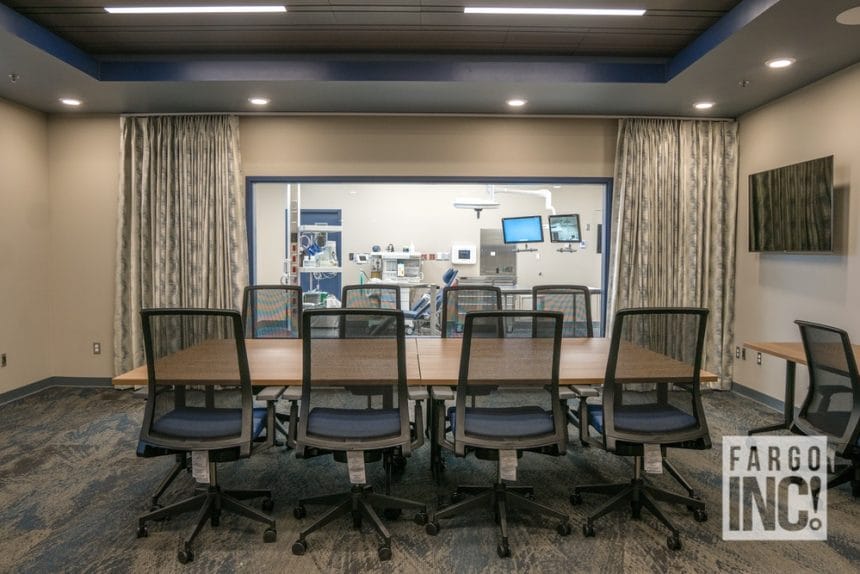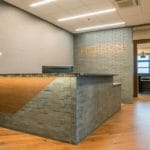Expert
Jamie DeJean
Owner of Smart Home Technologies
When most people think about making their office high-tech, most people are concerned about the costs associated with that. Is making a high-tech office cost-prohibitive or has it become more affordable?
There certainly are components of office technology that may be price prohibitive for some companies. As with any decision, it is important to weigh the costs and benefits when determining what is the best use of resources. At Smart Home Technologies, we have found great success completing a Technology Inventory at the start of a project. We discuss the different areas of technology that exist for business spaces and what the benefits are. We then compile a list of items that our clients are interested in and develop a preliminary technology bid. With a dollar amount now associated with each area of the bid, decisions can be made about what items are appropriate to implement right away and what items are not appropriate for the project. Additionally, and equally important, decisions can be made regarding what items are not immediately needed but could be added in the future. These items are prewired to allow the system to grow in the future while also minimizing additional future costs.
What are some of the most popular ways to make an office high-tech?
Structured Wiring – Providing correct wiring infrastructure is critical for all technology systems to operate reliably. This can include lighting control, motorized window treatments, light sensors, occupancy sensors, heating/cooling sensors, wired and wireless networking, video cameras, card access, security, video conferencing, white noise, background music and many other systems. Structured wiring is not brand or product-specific. It provides what is needed to work with a vast majority of current products and is forward-thinking to future products and applications. Depending on the area being wired, coax cable, control lines, networking cables and fiber optic cables may be appropriate. It is a technology providers’ role to evaluate what a business has for needs and to provide a structured wiring package that will serve the business’ current and future needs.
Networking – We hear lots about wireless devices. This can lead people to believe wiring a connection to a building’s technology infrastructure isn’t necessary. This is far from true. Wired connections provide us with the best performance, highest reliability and best security possible. If a device doesn’t require moving from one location to another, the best practice is to provide a wired connection. This generally includes desktop computers (or docking stations for laptops), network printers, servers, cameras, video conferencing, etc. It is also recommended that rooms or areas that are mission-critical have a redundant location for wireless devices to hardwire to a network in case of a wireless system failure or when outside interference prevents the wireless network from being reliable. Wireless networks are susceptible to inference from many sources, including other wireless networks and other electronic devices that emit interference (microwaves, wireless cameras, etc.). Relying on Wi-Fi for a business (or home) isn’t considered ideal for best performance. It is best to use wireless for devices that are mobile or were not wired during an original design.
Simple Control Systems – Internal team meetings, as well as collaborating with remote offices or other organizations through video conferencing is a common practice among many businesses and organizations. What previously involved expensive and time-consuming travel has widely been replaced with technology-based solutions. Properly implemented control systems provide all employees the opportunity to start a video conferencing meeting on their laptop, in a board room or a collaboration space with confidence.
Automation of mechanical systems such as lighting control, heating cooling and window treatments. By integrating these mechanical systems with one control system, they can work together in an efficient manner that improves the work environment while reducing energy costs.
White Noise – White noise is similar to running a fan to help you sleep. A white noise system produces a steady sound across a wide spectrum of frequencies that raises the noise floor and reduces distractions from outside interference. An increased noise floor also provides additional privacy. Reductions in audible interference allow for better employee focus.
Background Music – Background music can be used to welcome guests and provide a pleasant experience going from one location to the next. It also offers improved privacy between offices similar to a white noise system.
Security and Monitoring – Card access, alarm systems and camera systems not only provide protection and alerts in the case of a break in, but they also allow employers to track client and employee traffic, deliveries, product monitoring, etc.
What do you think offices 10 years from now will look in terms of technology?
I think we will continue to see a rise in the number of remote employees that do not come into a traditional office daily (or traditional working hours). This benefits the employer (less physical space to secure) and offers employees the added benefits and flexibility of working from home. Technology gives these employees the ability to remain connected with what is happening in the office and staying connected with their colleagues.
I also see a continued increase in sensors in an office space. Sensors to allow lighting, heating and cooling and window treatments work together as a cohesive system. These sensors can be used to turn lights on or off based on what areas are being used. They can also ensure lights are set to appropriate levels by monitoring the ambient light present in a room. This measurement can then be used to determine how much additional light is needed to provide adequate illumination in a work area. Sensors also allow motorized window treatments to work together with heating and cooling systems to allow or reject thermal gain based on the sun’s position and if the building is in a heating or cooling mode. All of this results in businesses reducing energy costs while promoting a more comfortable and productive working environment for employees.
4 things to consider when building your office
1. What currently makes your business successful?
Building layout, community collaboration spaces, individual workspaces, private offices, etc. should all be taken into consideration.
2. What limits your business from being more efficient?
Is it difficult for different departments to work together because of physical or technical separations? Is time being lost to a low-reliability network system or a difficult to use video conferencing system?
3. Are there opportunities for technology to be used to improve employee efficiency?
This can be things like providing better task lighting, offering a more comfortable working environment by better regulating temperature, eliminating glare on difficult to read computer monitors and reducing distractions from interoffice noise.
4. Can technology increase your company’s profitability by lowering energy costs, increasing employees’ knowledge and skills through better access to outside resources or promoting a better working environment that allows employees to be more efficient completing a task?
Smart Home Technologies In Use
The Facial & Oral Surgery Center
Smart Home Technologies recently redid the Facial and Oral Surgery Center’s office after they provided Dr. Michael Noffze’s technology package for his home. Dejean and Dr. Noffze went to the Crestron Experience Center in Rockleigh, N.D. to demo and experience technology that was eventually incorporated into The Facial and Oral Surgery Center’s new location.
Lighting
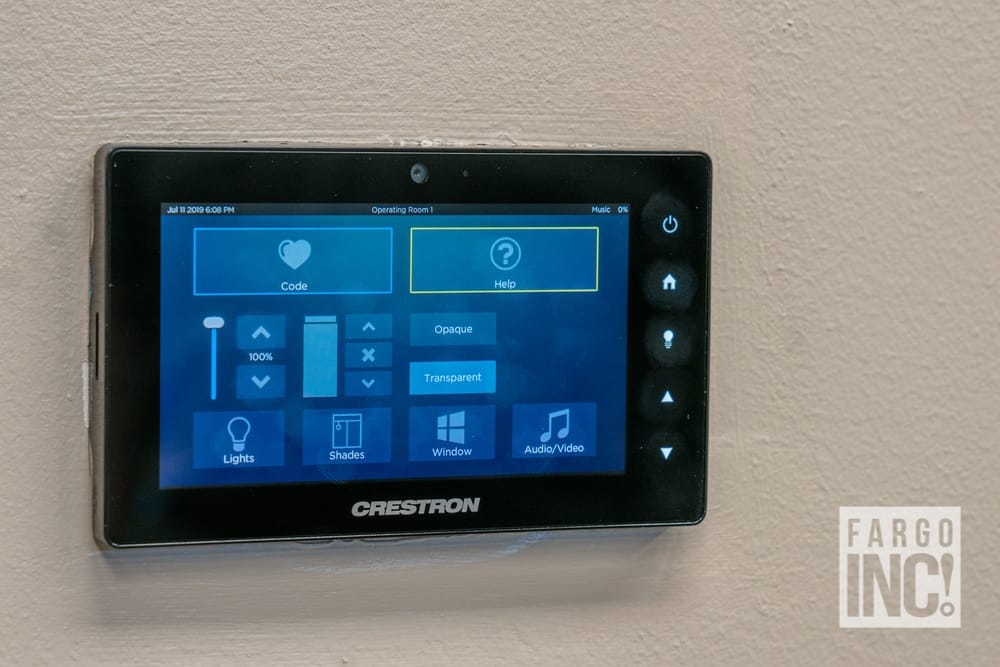
The surgery center uses a centralized lighting control system. This system allows simple control of lighting for employees from in-wall keypads. These keypads also provide control of motorized window treatments and access to the building’s “Call for Assistance” system.
Light Harvesting
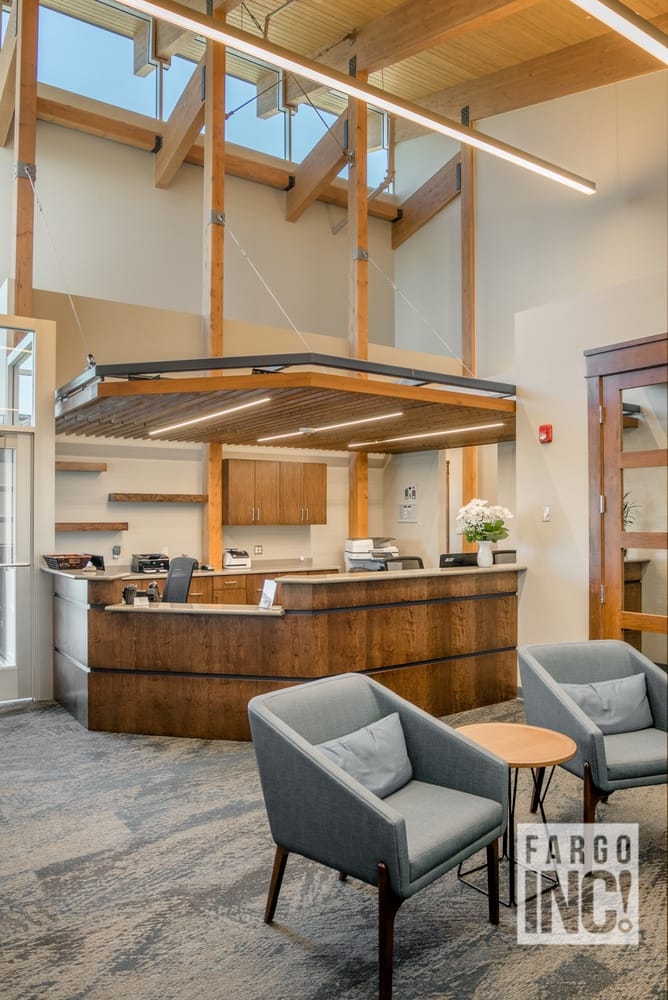
The front reception desk has a light sensor that measures the ambient light present above the work station and dims the overhead LED lighting to provide the proper amount of illumination to work comfortably without using more light and energy than required.
Window Treatments

There are motorized roller shades installed throughout the facility. In some rooms, these window treatments help reduce thermal energy from heating the space or reducing glare on computer and video displays. In client care rooms, a non-transparent fabric was used to ensure client privacy. The board room doubles as the classroom with the ability to view the Operating Room when students are present to observe procedures. Roller shades are not considered sanitary in Operating Rooms, so smart glass was installed in the upper clerestory windows to prevent direct sunlight on the patient and surgeon while operating. All of these window treatments are controlled from the in-room touch panels as well as closed automatically when employees leave at the end of the day.
Call for Assistance System
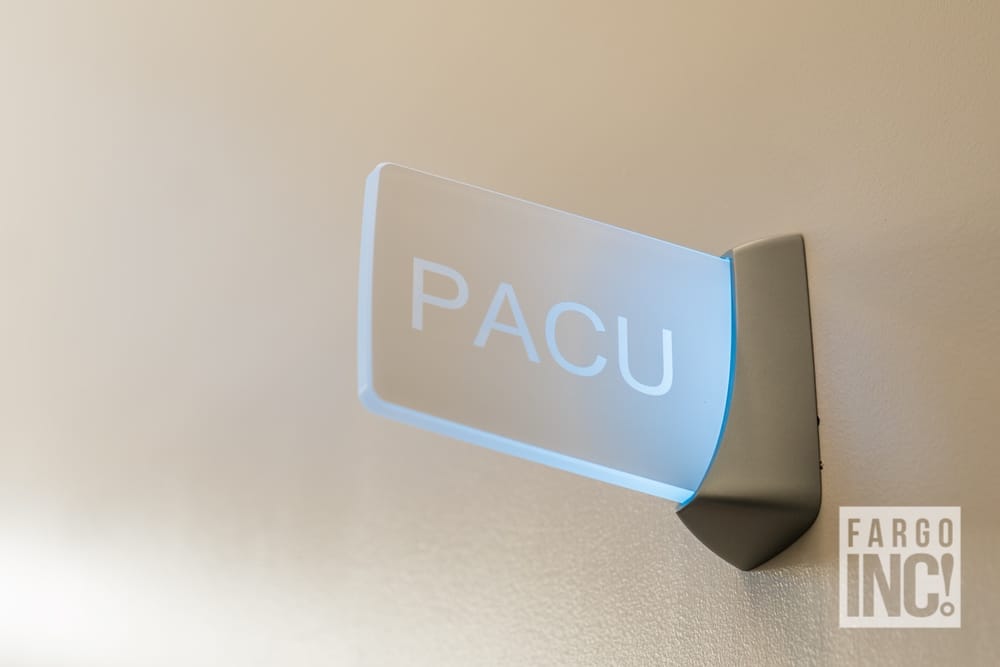
The concept for this system was provided by Dr. Noffze. Each of the Operating and Client Exam Rooms has an illuminated room sign in their respected hallways. If staff members need additional assistance, they simply press the “Call” button from the room touch panel. This triggers an audible tone through the other touch panels and displays the room in which assistance is needed. In addition to the audible and visual feedback from the touch panels, the room that originated the help request begins blinking to help staff quickly navigate to where they are needed. In the rooms without touch panels, status indicators were installed and blink to alert other staff if assistance is needed.
